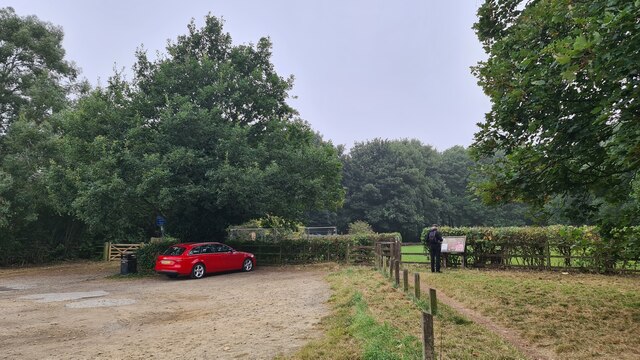Car park for Waterloo Pottery Kiln
Introduction
The photograph on this page of Car park for Waterloo Pottery Kiln by Chris Morgan as part of the Geograph project.
The Geograph project started in 2005 with the aim of publishing, organising and preserving representative images for every square kilometre of Great Britain, Ireland and the Isle of Man.
There are currently over 7.5m images from over 14,400 individuals and you can help contribute to the project by visiting https://www.geograph.org.uk

Image: © Chris Morgan Taken: 2 Sep 2024
The kiln was not visible on this day, the site cordoned off for restoration work so this is what it's all about. From Atlas Obscura website; https://www.atlasobscura.com/places/waterloo-pottery-kiln The Waterloo Pottery Kiln was named for the Battle of Waterloo that took place in 1815, the same year the kiln was built. It is one of the few surviving parts of the famous Rockingham Pottery, a complex of several kilns, a flint mill, china warehouses, and cottages that once occupied this site in Swinton, England. In 1820 the pottery started experimenting with the manufacture of porcelain, putting a great financial strain on the business and almost bankrupting the operation. However, the experiments finally paid off. The products caught the interest of the 4th Earl Fitzwilliam, a descendant of the Marquis of Rockingham (whose stately home is located a few miles away in Wentworth). Impressed with the porcelain’s potential, he lent both money and the family name to the pottery business. Rockingham porcelain products became famous. One of the best known is a large, exquisite dessert service that took eight years to complete and was delivered to Queen Victoria, and is currently housed in Windsor Castle. However, most famous products of the Rockingham enterprise are the two known examples of the “Rhinoceros Vases,” very impressive pieces made in the early 1820s. They are over three feet tall and were claimed at the time to be the largest piece of porcelain ever fired in one piece in England. When Rockingham Pottery closed in the 1840s, a door and windows were installed and the kiln was converted to a private residence, then later used as an isolation hospital for smallpox victims. Today it’s possible to tour the grounds of the historic production site. You can still see the pottery ponds that were used to provide water power for the flint mill, along with parts of the gatehouse and painting rooms where the objects were so ornately decorated.

